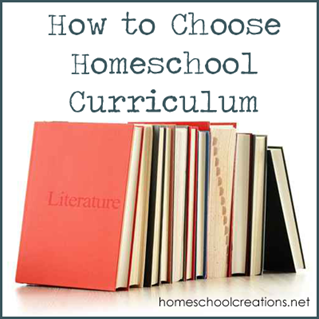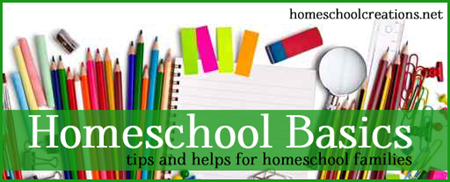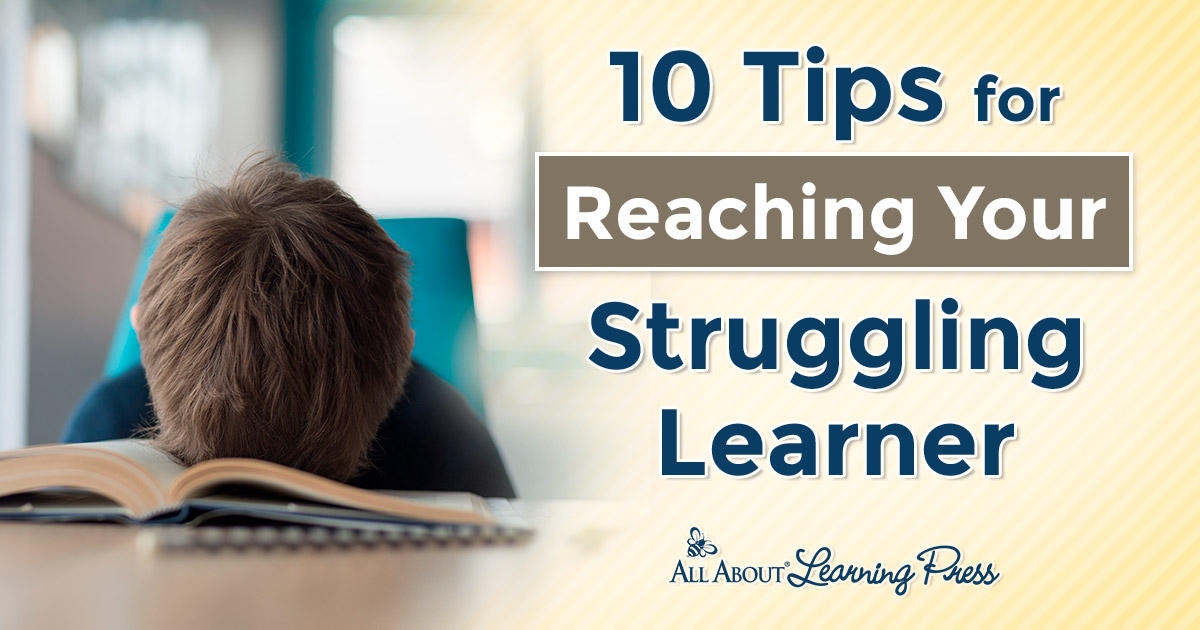- Like
- Digg
- Del
- Tumblr
- VKontakte
- Buffer
- Love This
- Odnoklassniki
- Meneame
- Blogger
- Amazon
- Yahoo Mail
- Gmail
- AOL
- Newsvine
- HackerNews
- Evernote
- MySpace
- Mail.ru
- Viadeo
- Line
- Comments
- Yummly
- SMS
- Viber
- Telegram
- Subscribe
- Skype
- Facebook Messenger
- Kakao
- LiveJournal
- Yammer
- Edgar
- Fintel
- Mix
- Instapaper
- Copy Link

Curriculum choices can be truly overwhelming. Walk into any vendor hall at a homeschool convention and your will find tables and tables of books, workbooks, and manipulatives. There are so many choices and new ones are presented every single day!
Maybe another homeschool family {or blogger} you know seems to have the ‘perfect’ curriculum fit. The good news is, there isn’t one set curriculum that is perfect for everyone. Your family is able to pick and choose what they like and create a custom curriculum that is beneficial to all of you. What works for another family may not be the best for another, or what works for one child may not work for another.
Over the years our family has tried a variety of things – ranging from a complete curriculum package to creating things to use, and it has morphed into a combination of pieces that we now use together as a family and components that we use individually to round out the various subject areas {see our current curriculum list here}.
How do you decide what is right for you family?
Questions to Ask Before Purchasing Curriculum
-
What is your teaching style or educational philosophy? Are you familiar with the different teaching methods. This can help narrow down some of the various pieces that you might be looking at because the teaching method of that program could differ greatly than your philosophy.
-
What are your children’s learning styles? Every child is different in their learning approach and may process information differently. Some pieces of curriculum are tailored to meet the needs of various learners, so this is very helpful to know!
-
What educational goals have you set for your children and family? This is another area that is important to look at. If your goal is for your children to learn about American history this year, that complete program on the Middle Ages may not be what you need right now.
-
What is your budget? As stinky as that word can be, it can also help you reign in any crazy spending. Homeschooling isn’t always free {although we’ll be talking about ways to save money later!!}. I strongly advise setting a budget and knowing your spending limits. It’s always helpful to know the retail cost of a curriculum or book and have it handy. That way if you find a great deal on something you need, you know to snatch it up {and if you have the money to do so!}. I typically try to buy pieces of curriculum that can be re-used with future children and also ones that have a great resale value {just something to consider}.
-
Will you teach some subjects to all children? Some families focus on specific grade levels and books while other families work on certain subject areas together as a family. For example, we work on history and Bible together, a few of our children work on science together, but there are other areas such as math and language that are grade-level specific.
-
What works for your current season of life? There are some programs that are more labor-intensive than others. If you have lots of little ones underfoot, it may not be the right timing for your family. The ages and stages of your children make a difference. When we first started out, I purchased a very literature heavy curriculum {meaning I read out loud a LOT}. Unfortunately at that point in our lives, I was nursing an infant and was operating on very little sleep which translated to me falling asleep while reading our lessons.
Additional Things to Consider When Choosing Curriculum
Answering the questions in the section above may help you narrow down some of your choices and give you some good questions to approach various vendors with when you are looking for curriculum. Here are a few additional tips and thoughts to consider as well.
-
Start with what you have. You would probably be surprised at all of the things your have hidden on shelves and in cabinets that can you used during your school year. Make a quick inventory list of what you have handy before you buy a lot of new things. If you can keep a running list of the things you have on hand it will come in handy {and keep you from buying duplicates!}.
-
Take advantage of your library system. Before buying an expensive book that you might only use for a few weeks of the school year, check to see if your local library has book on their shelves. They may even be able to borrow it from another library in your lending system and some libraries will even consider ordering suggestions. Don’t be afraid to ask!
-
Read reviews and ask other moms before buying. Talk to your friends {both in real life and online}, read reviews of curriculum, check out samples from companies, and also know cancellation or return policies. Find out what is working {or isn’t working} for other families and build from there. Just remember – each family is different and just because it works for one family doesn’t mean it will work for yours.
-
Visit a homeschool convention or vendor fair. While this can be overwhelming, it is also a great opportunity to get a hands-on look at various companies, talk to vendors and find out more about their products.
-
Don’t be afraid to purchase used curriculum. Once you are familiar with various products, you may want to consider looking for teacher’s manuals and other components you are looking for either online or at used curriculum sales. I’ve found some fabulous deals this way – and it also doesn’t sting as much when you realize something just isn’t going to work for you. {Note: Respect copyright laws when purchasing or selling used}.
-
Borrow from another family. There have been times that we have been able to share things that we’ve purchased and are not currently using with other families or took a trial run with books or pieces that we didn’t know if we were ready to invest in.
With all that said, there are times that you find out part way through the year that something you thought would be perfect just isn’t. Sometimes you discover that curriculum isn’t working. Remember, there is likely to be a little tweaking involved in the process, and while it’s frustrating – it’s ok. The first bit of homeschooling involves a learning curve where you are discovering your areas of comfort in teaching and your children’s learning grooves.
What one tip would you offer other families when choosing curriculum pieces? Leave a comment below and chime in with your thoughts.
This post is a part of the Homeschool Basics series. Be sure to read the other posts if you are just joining in. For the record, I am not an expert. I’m a homeschool mom who is sharing what she’s learned so far along the way with her own family.










 The printables shared on this site are FREE of charge unless otherwise noted, and you are welcome to download them for your personal and/or classroom use only. However, free or purchased printables are NOT to be reproduced, hosted, sold, shared, or stored on any other website or electronic retrieval system (such as Scribd or Google docs). My printables are copyright protected and I appreciate your help in keeping them that way.
If you download and use some of my printables and then blog about them, please provide a link back to my blog and let me know - I'd love to see how you are using them! Please be sure to link to the blog post or web page and not directly to the file itself. Thank you!
The printables shared on this site are FREE of charge unless otherwise noted, and you are welcome to download them for your personal and/or classroom use only. However, free or purchased printables are NOT to be reproduced, hosted, sold, shared, or stored on any other website or electronic retrieval system (such as Scribd or Google docs). My printables are copyright protected and I appreciate your help in keeping them that way.
If you download and use some of my printables and then blog about them, please provide a link back to my blog and let me know - I'd love to see how you are using them! Please be sure to link to the blog post or web page and not directly to the file itself. Thank you!
Your link for your curriculum choices isn’t working on this post.
Forgot to link it. I’m out right now, but will get it in a bit. The link is also in my top navigational bar under the about section —
Sent from Mailbox for iPhone
And thanks for letting me know I forgot the link!! :)
I just wanted to post a quick reminder in regards to used curriculum…please be sure you aren’t violating copyright laws when you buy and sell used curriculum. For instance, if you buy a workbook from someone who simply copied the pages for their own use but left the workbook unmarked, you are doing something illegal. It’s ok to make copies of books/workbooks for personal use but it is not ok to then turn around and sell the book. I know as homeschoolers we are often trying to save money any way we can but we have to be careful how we go about doing this.
absolutely!! There are some programs that are very specific about not being resold {even teacher’s manuals} vs. computer programs that are ok {Teaching Textbooks}.
So funny! My goal for the night is to finish my list of texts for my 1st grader that need to be handed into the district next month. Great timing!
you can do it!! you all have to turn it in early!!!
Avoid the temptation to get advice only from peers with children still in school. What works on a daily basis doesn’t always make for a great education in the long run, so be sure to include veteran home schoolers with grown, academically sound children in your list of counselors.
Also, a money-saving tip I learned: Check thrift stores for curricula! I’ve found at least a dozen books (student reading texts and teacher manuals) from A Beka, Saxon, and other publishers at local Goodwills and charity shops, at less than $2 a book.
Thrift stores offer some GREAT finds!! :)